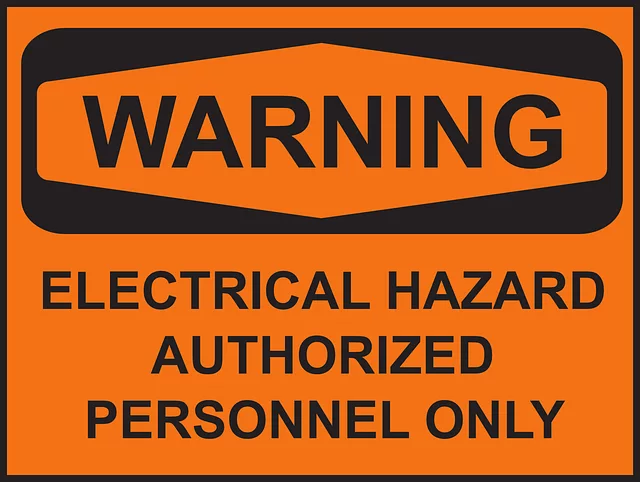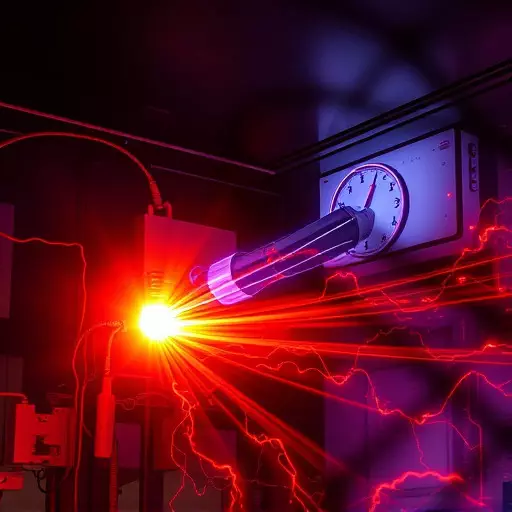Arc flash hazard analysis is a comprehensive process that identifies and mitigates risks within facilities, enhancing electrical safety compliance. By examining equipment, assessing energy release potential, and understanding event likelihood, organizations can implement targeted solutions like labeling, PPE, and engineering controls. Advanced monitoring systems integrate real-time data to proactively detect anomalies, reducing risks through immediate interventions. Future technologies leverage sensors and machine learning for enhanced accuracy in risk prediction. Comprehensive training programs, emphasizing arc flash hazard analysis and proper PPE usage, are crucial for empowering employees to actively participate in accident prevention.
In today’s industrial landscape, understanding and mitigating arc flash hazards is paramount to ensuring electrical safety compliance. This comprehensive guide delves into the evolving trends shaping arc flash prevention technology. From traditional methods to modern approaches, advanced monitoring systems, and innovative technologies, each section explores strategies to identify risks and potential sources, reduce arc flash risk, and foster a culture of optimal electrical workplace safety.
- Understanding Arc Flash Hazard Analysis: Identifying Risks and Potential Sources
- Traditional Methods vs Modern Approaches for Arc Flash Risk Reduction
- The Role of Advanced Monitoring Systems in Electrical Safety Compliance
- Innovative Technologies Shaping the Future of Arc Flash Prevention
- Implementing Comprehensive Training Programs for Optimal Electrical Workplace Safety
Understanding Arc Flash Hazard Analysis: Identifying Risks and Potential Sources
Arc Flash Hazard Analysis is a critical step in ensuring electrical safety compliance and reducing arc flash risk. It involves identifying potential sources of arcing within an electrical system, evaluating the energy released by such events, and understanding the likelihood of occurrence. By conducting thorough assessments, facilities can pinpoint high-risk areas and equipment, enabling targeted interventions to mitigate dangers. This process includes scrutinizing components like switches, connectors, and overcurrent protection devices, as well as considering human factors and work practices.
Understanding these risks is essential for implementing effective arc flash prevention strategies. It encourages the adoption of best practices, such as proper labeling, personal protective equipment (PPE), and engineering controls. These measures ensure that workers are equipped with the knowledge and resources needed to operate safely around hazardous electrical energy releases, ultimately contributing to a safer work environment and improved electrical safety compliance.
Traditional Methods vs Modern Approaches for Arc Flash Risk Reduction
In the past, managing arc flash risks primarily relied on traditional methods such as personal protective equipment (PPE) and engineering controls. These approaches, while essential for electrical safety compliance, often lacked proactive measures to mitigate the inherent dangers of arc flash events. Arc flash hazard analysis, a crucial process that identifies potential sources of ignition and assesses their associated risks, was not commonly employed. As a result, many industries struggled with minimizing exposure to this severe hazard.
Modern approaches to arc flash risk reduction have transformed the landscape of electrical safety. Advanced technologies and innovative strategies now empower organizations to proactively manage risks rather than merely reacting to incidents. Comprehensive hazard analysis has become a cornerstone of these modern methods, enabling professionals to identify weak points and implement targeted solutions. This shift towards proactive measures ensures that arc flash prevention is seamlessly integrated into an organization’s overall electrical safety program, fostering a safer working environment for employees and promoting regulatory electrical safety compliance.
The Role of Advanced Monitoring Systems in Electrical Safety Compliance
Advanced monitoring systems play a pivotal role in enhancing electrical safety compliance and significantly contributing to arc flash risk reduction. These cutting-edge technologies are designed to continuously observe and analyze various parameters within electrical systems, such as voltage, current, temperature, and equipment conditions. By leveraging real-time data, these systems can detect anomalies or potential hazards before they escalate into dangerous arc flash events. This proactive approach allows for immediate interventions, such as power shutoffs or equipment isolations, to mitigate risks effectively.
Moreover, advanced monitoring integrates seamlessly with comprehensive arc flash hazard analyses, enabling a deeper understanding of the unique risks associated with specific installations. By combining real-time monitoring with thorough risk assessments, facilities can develop tailored safety strategies that align with industry best practices. This integrated approach ensures not only compliance with electrical safety standards but also optimizes resource allocation, enhances operational efficiency, and ultimately fosters a safer working environment for personnel.
Innovative Technologies Shaping the Future of Arc Flash Prevention
The future of arc flash prevention is being shaped by innovative technologies that promise to revolutionize electrical safety compliance. Advanced sensors and machine learning algorithms are now integrated into arc flash hazard analysis systems, enabling more accurate risk reduction strategies. These intelligent solutions can continuously monitor environmental conditions and predict potential arc flash events with unprecedented precision, allowing for proactive measures to be taken rather than reactive responses.
One notable trend is the development of smart, self-monitoring equipment that can detect subtle anomalies in electrical circuits, signaling potential hazards before they escalate. This real-time data analysis enhances electrical safety compliance by providing operators and maintenance teams with actionable insights, enabling them to conduct preventative maintenance and mitigate arc flash risks more effectively. These cutting-edge technologies not only foster a safer work environment but also contribute to significant cost savings and improved operational efficiency.
Implementing Comprehensive Training Programs for Optimal Electrical Workplace Safety
Implementing comprehensive training programs is a critical step in mitigating the risks associated with arc flash hazards in electrical workplaces. These programs should cover a wide range of topics, including identifying potential arc flash dangers, understanding the principles of electrical safety, and learning proper work practices to minimize exposure. By educating employees about the arc flash hazard analysis process, they can actively participate in risk reduction efforts. This involves assessing tasks, equipment, and existing protective measures to identify vulnerabilities and implement targeted strategies for electrical safety compliance.
Regular training sessions enable workers to stay updated with industry standards and best practices, ensuring they are equipped to handle potential arc flash events effectively. It fosters a culture of awareness, where every individual understands their role in preventing accidents. Moreover, these programs should emphasize the importance of personal protective equipment (PPE) and its proper usage, as it remains a fundamental layer of defense against arc flash injuries.


